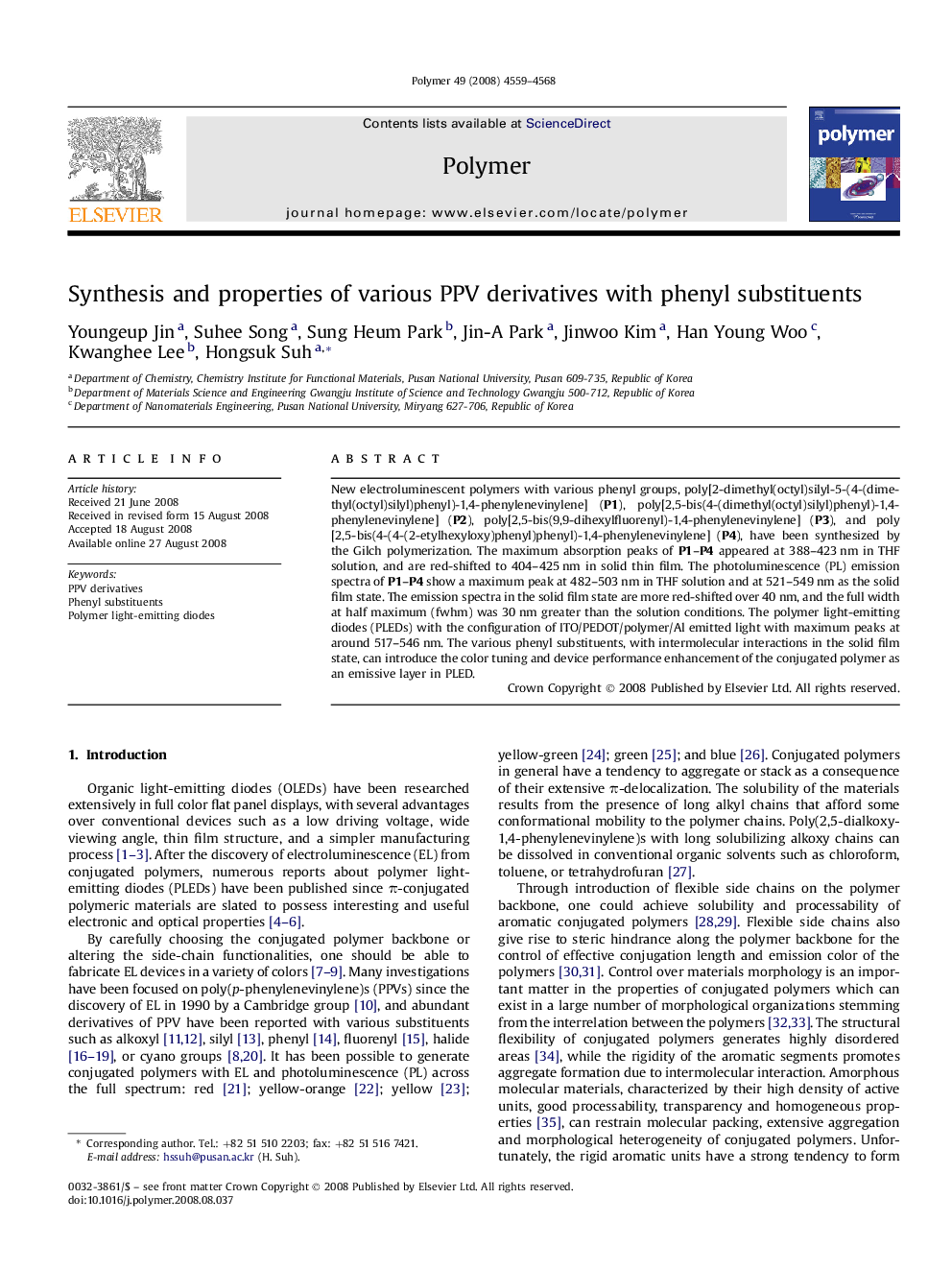| Article ID | Journal | Published Year | Pages | File Type |
|---|---|---|---|---|
| 5186621 | Polymer | 2008 | 10 Pages |
New electroluminescent polymers with various phenyl groups, poly[2-dimethyl(octyl)silyl-5-(4-(dimethyl(octyl)silyl)phenyl)-1,4-phenylenevinylene] (P1), poly[2,5-bis(4-(dimethyl(octyl)silyl)phenyl)-1,4-phenylenevinylene] (P2), poly[2,5-bis(9,9-dihexylfluorenyl)-1,4-phenylenevinylene] (P3), and poly[2,5-bis(4-(4-(2-etylhexyloxy)phenyl)phenyl)-1,4-phenylenevinylene] (P4), have been synthesized by the Gilch polymerization. The maximum absorption peaks of P1-P4 appeared at 388-423Â nm in THF solution, and are red-shifted to 404-425Â nm in solid thin film. The photoluminescence (PL) emission spectra of P1-P4 show a maximum peak at 482-503Â nm in THF solution and at 521-549Â nm as the solid film state. The emission spectra in the solid film state are more red-shifted over 40Â nm, and the full width at half maximum (fwhm) was 30Â nm greater than the solution conditions. The polymer light-emitting diodes (PLEDs) with the configuration of ITO/PEDOT/polymer/Al emitted light with maximum peaks at around 517-546Â nm. The various phenyl substituents, with intermolecular interactions in the solid film state, can introduce the color tuning and device performance enhancement of the conjugated polymer as an emissive layer in PLED.
Graphical abstractDownload full-size image
